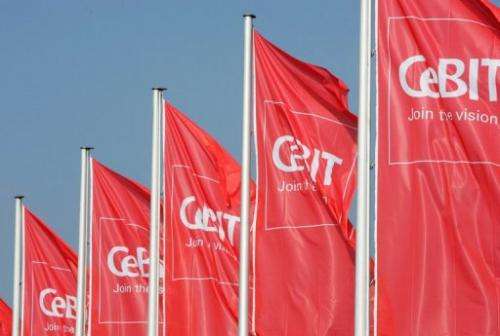Banners sporting the CeBIT computer fair logo flutter in the wind on March 13, 2007 at the fair grounds in Hanover, central Germany. A computer programme enabling paralysed patients to create artwork using just the power of their brains drew big crowds on Wednesday at the CeBIT, the world's top IT fair.
A computer programme enabling paralysed patients to create artwork using just the power of their brains drew big crowds on Wednesday at the CeBIT, the world's top IT fair.
Under a system pioneered by Austrian firm g-tec, the user wears a cap that measures brain activity.
By focusing hard on a flashing icon on a screen, the cap can recognise the specific brain activity connected to that item, allowing the user to "choose" what he or she wants the computer to do.
The artist can select various shapes and colours via brainpower and build up a basic picture on the screen, explained g-tec sales director Markus Bruckner. The user can also draw straight lines.
"This is primarily for disabled people, paralysed people or people who have suffered a stroke," he said.
The idea came from an artist who had a friend paralysed in an accident who loved painting. The artist wanted to find a way to let the friend draw again, said Bruckner, adding that g-tec was the only company offering this service.
Altogether, the system costs 12,000 euros ($15,600), including the brainwave-reading cap, the computer software and the technology to interpret the brain activity, said Bruckner.
It has already been trialled successfully on severely disabled patients, he added.
The CeBIT, in the northern German city of Hanover, is the world's biggest fair for high-tech, attracting this year around 4,100 exhibitors from some 70 countries.
(c) 2013 AFP
























